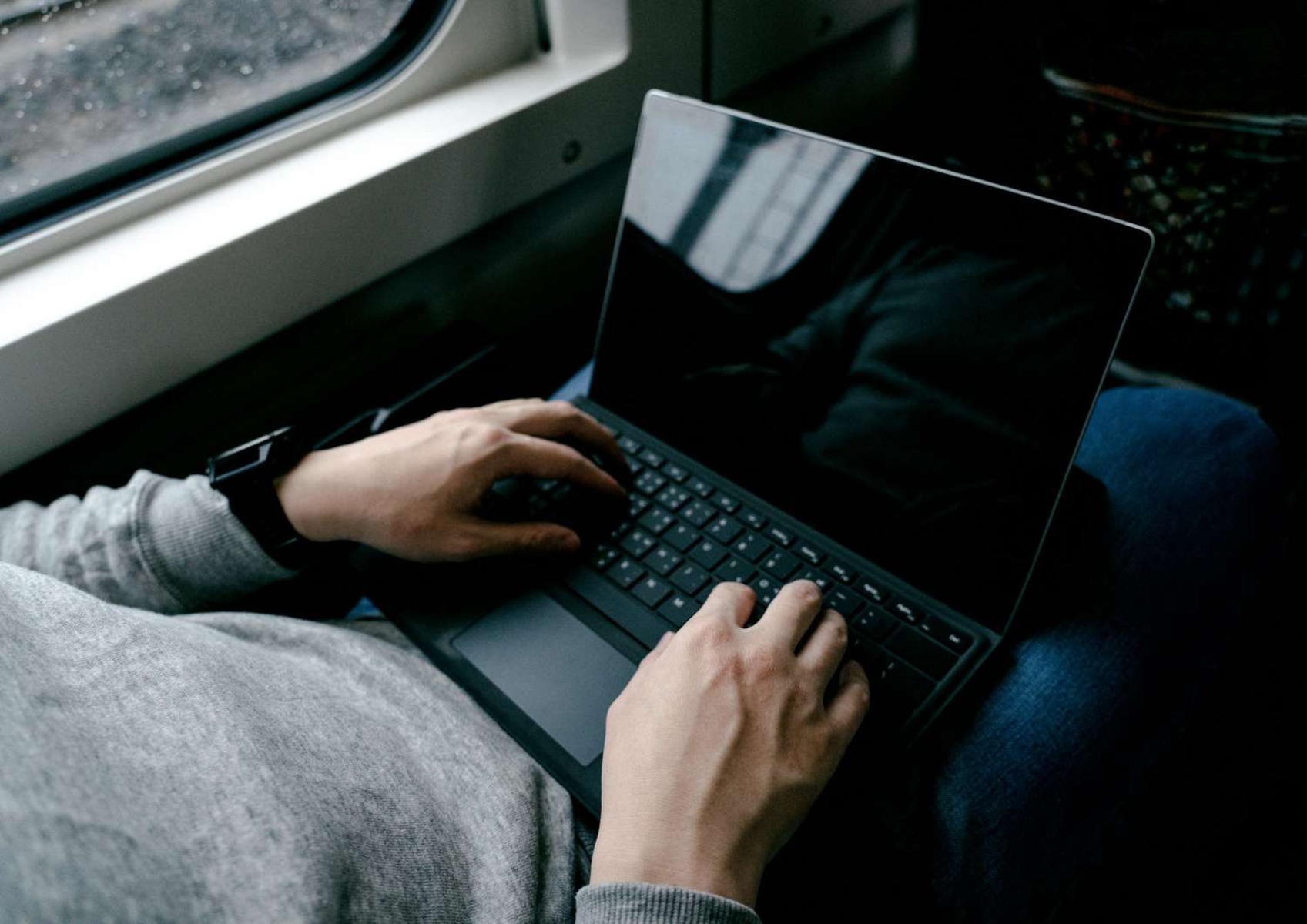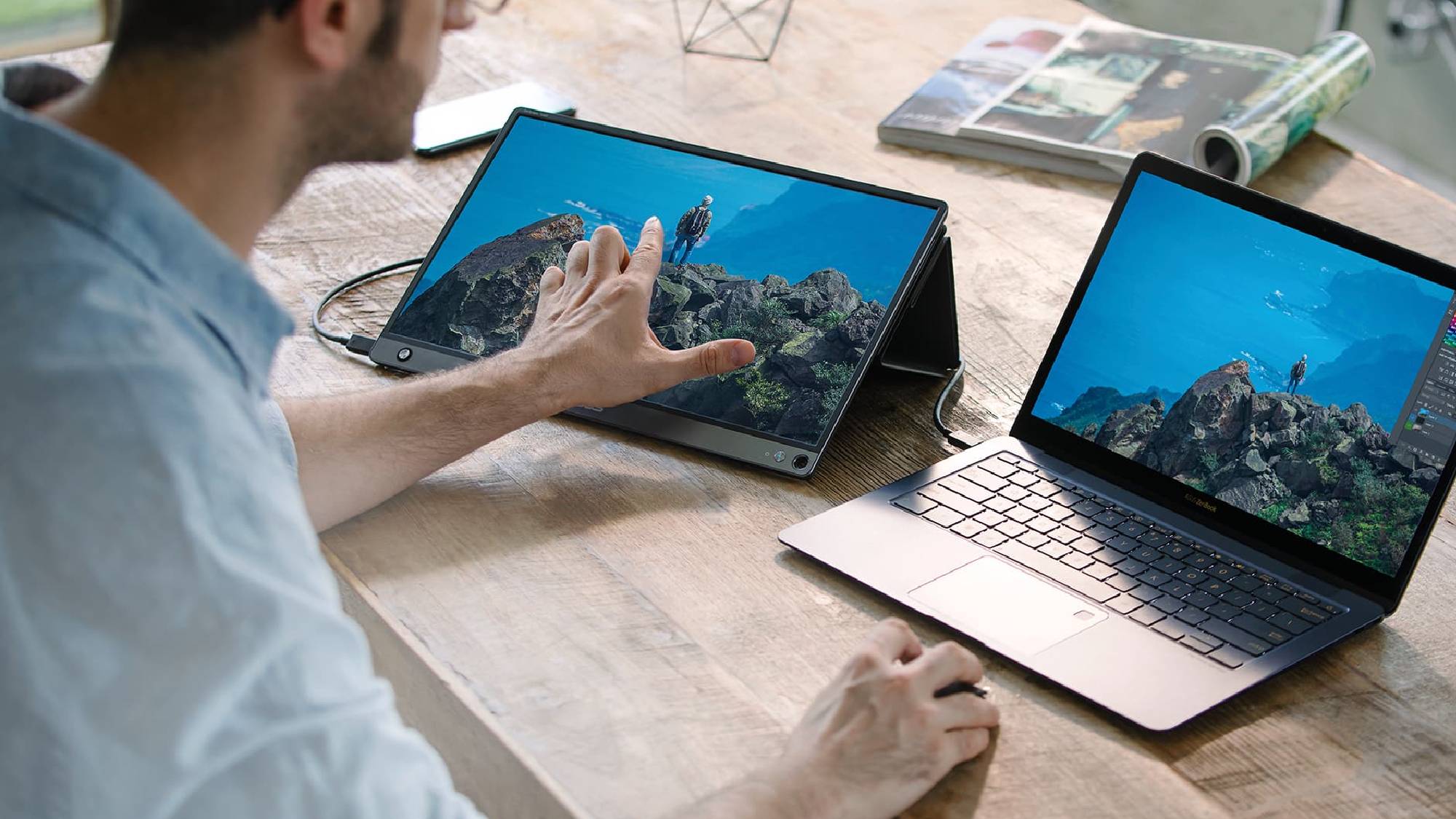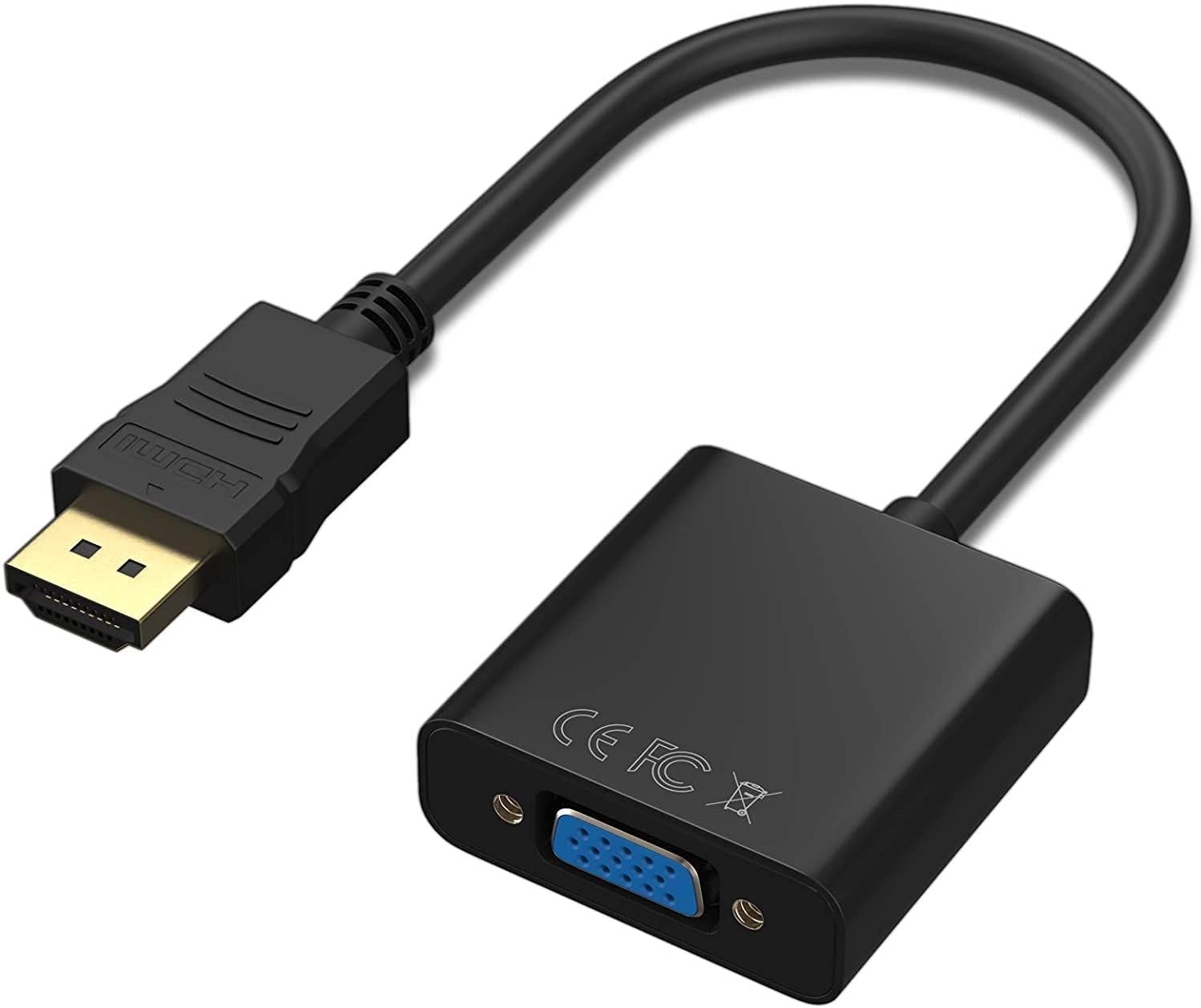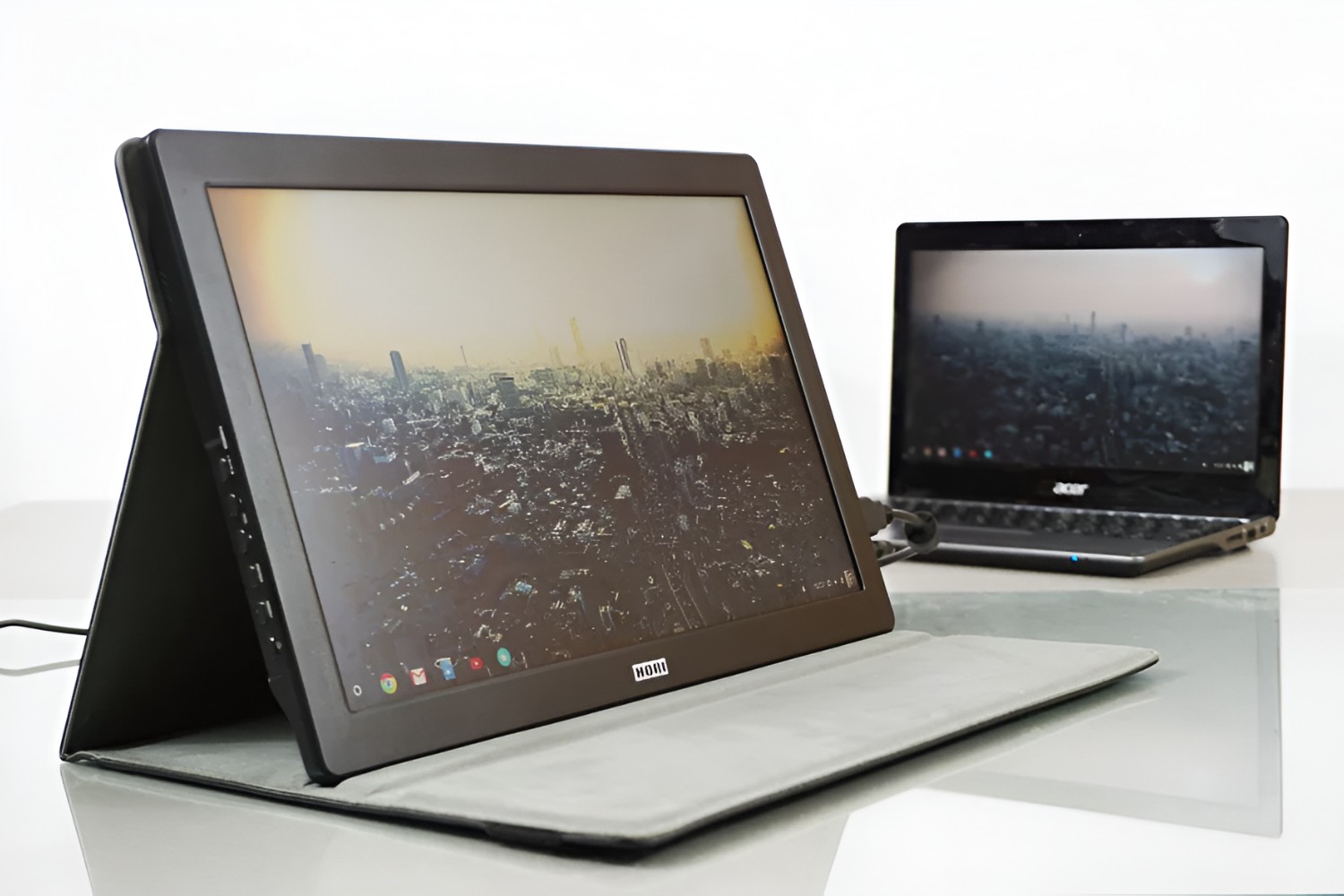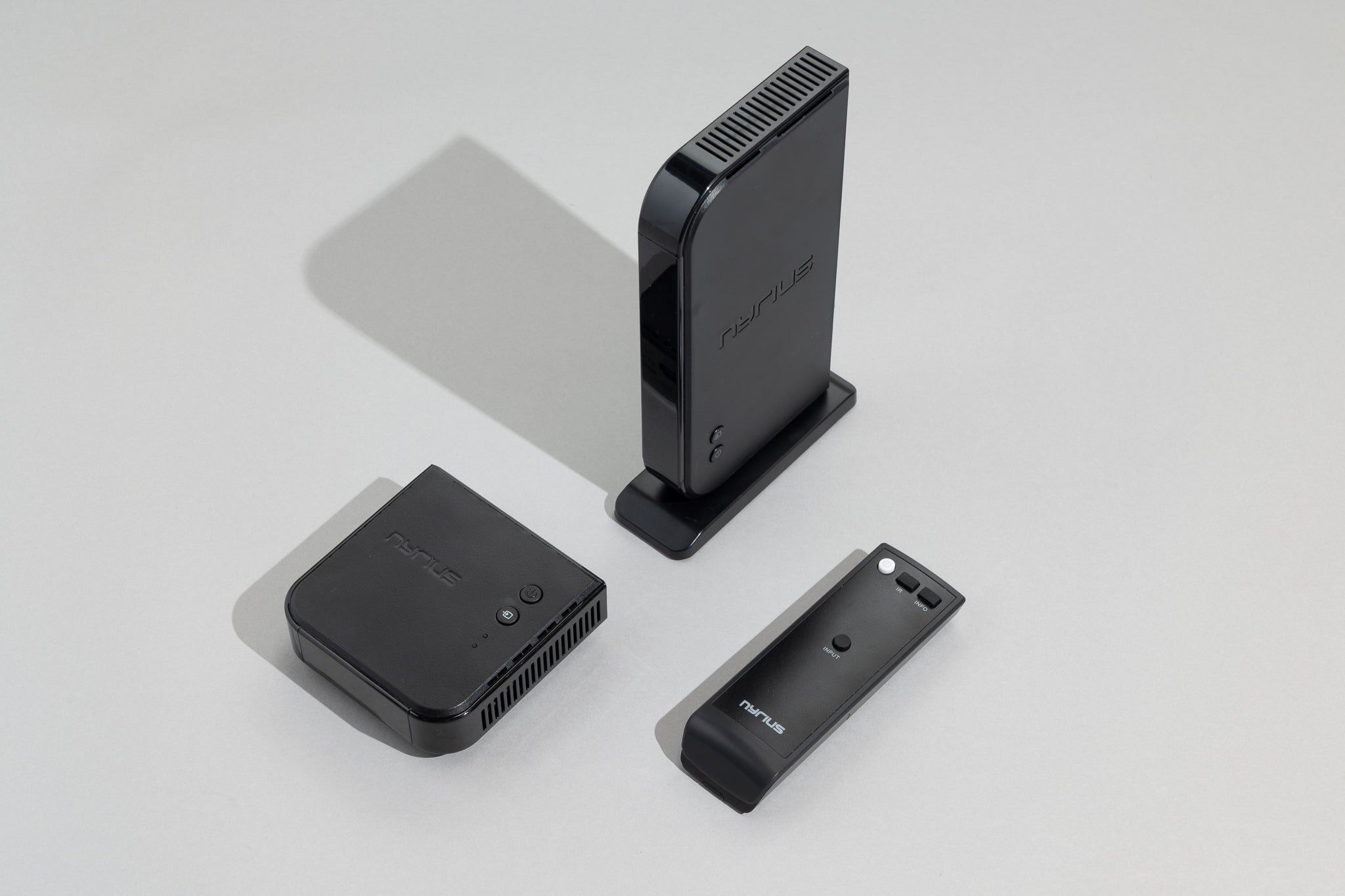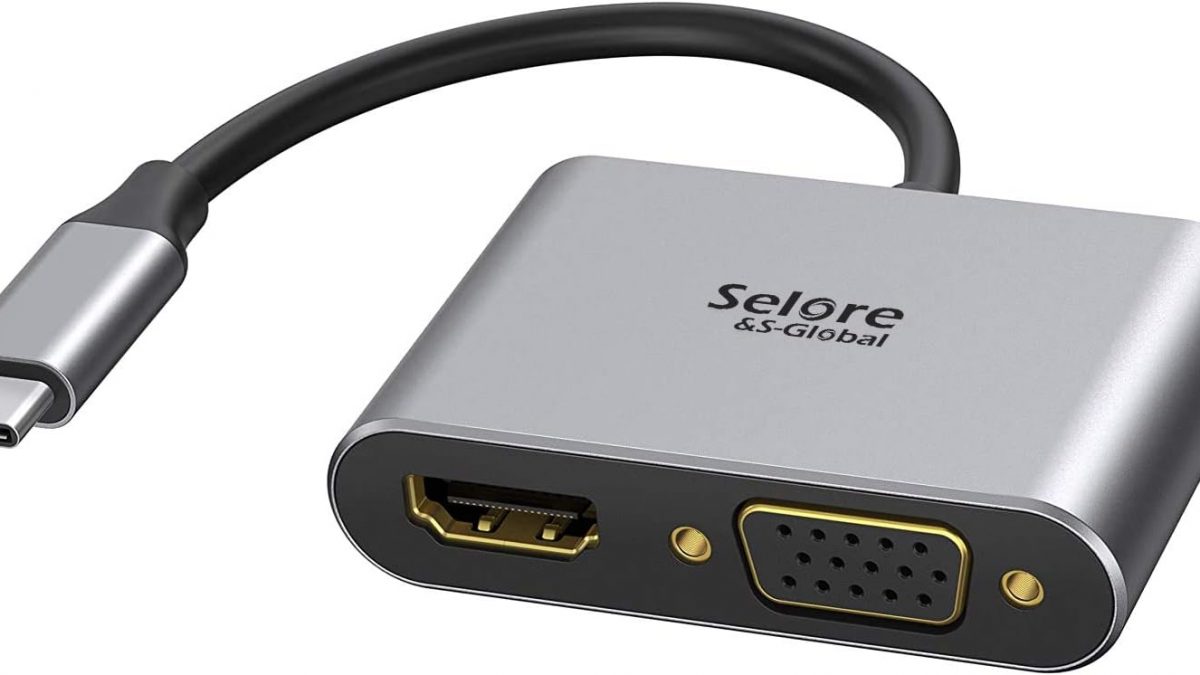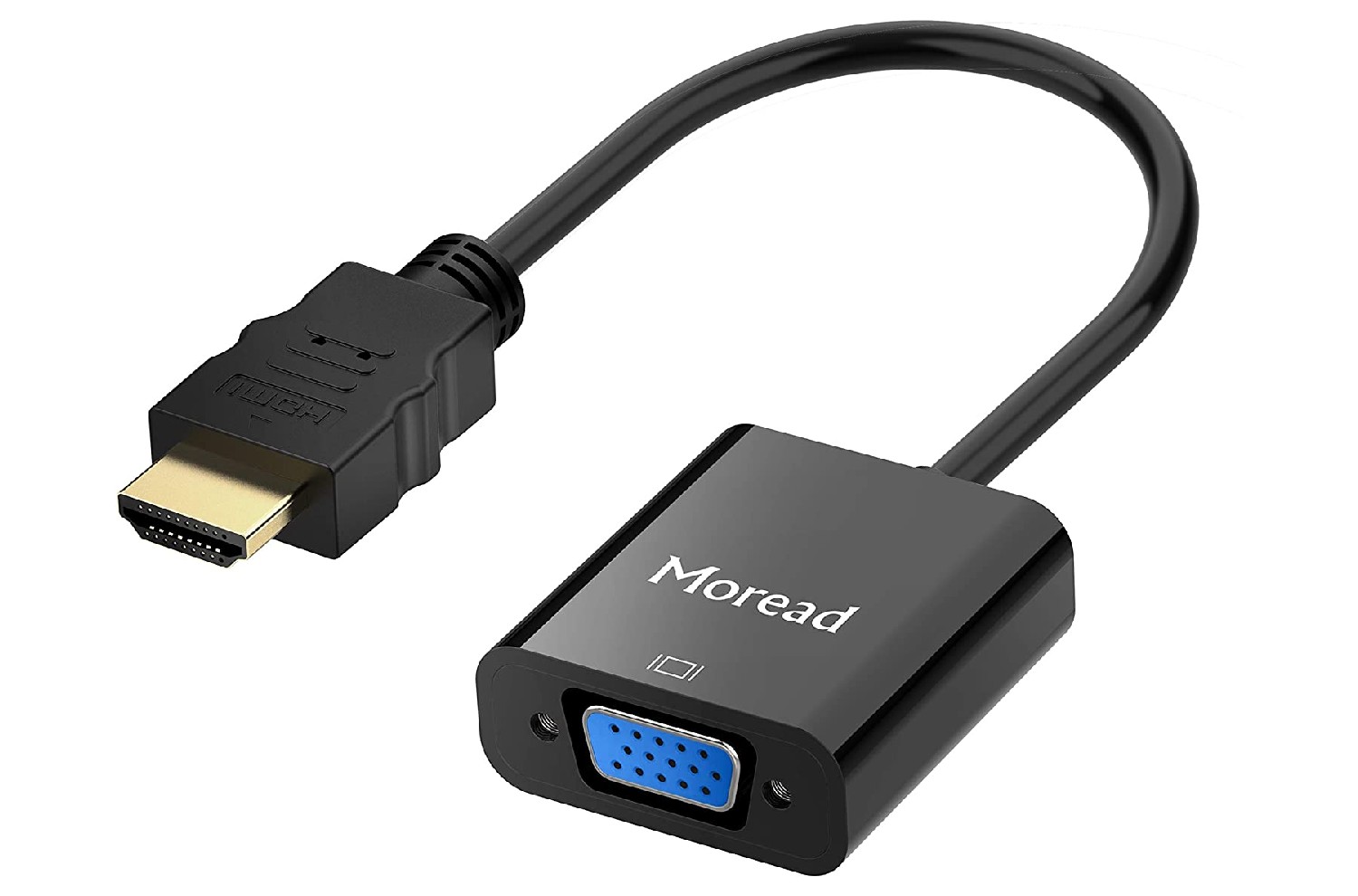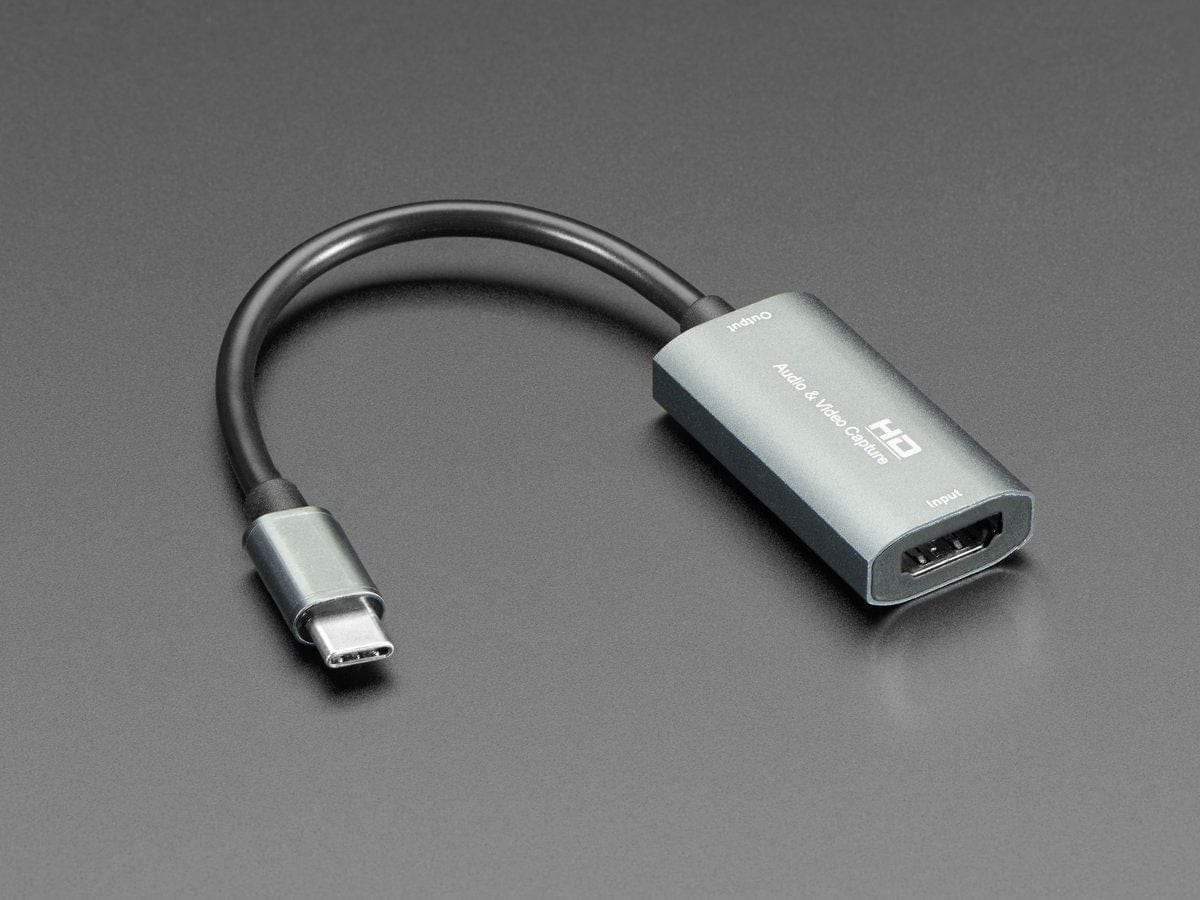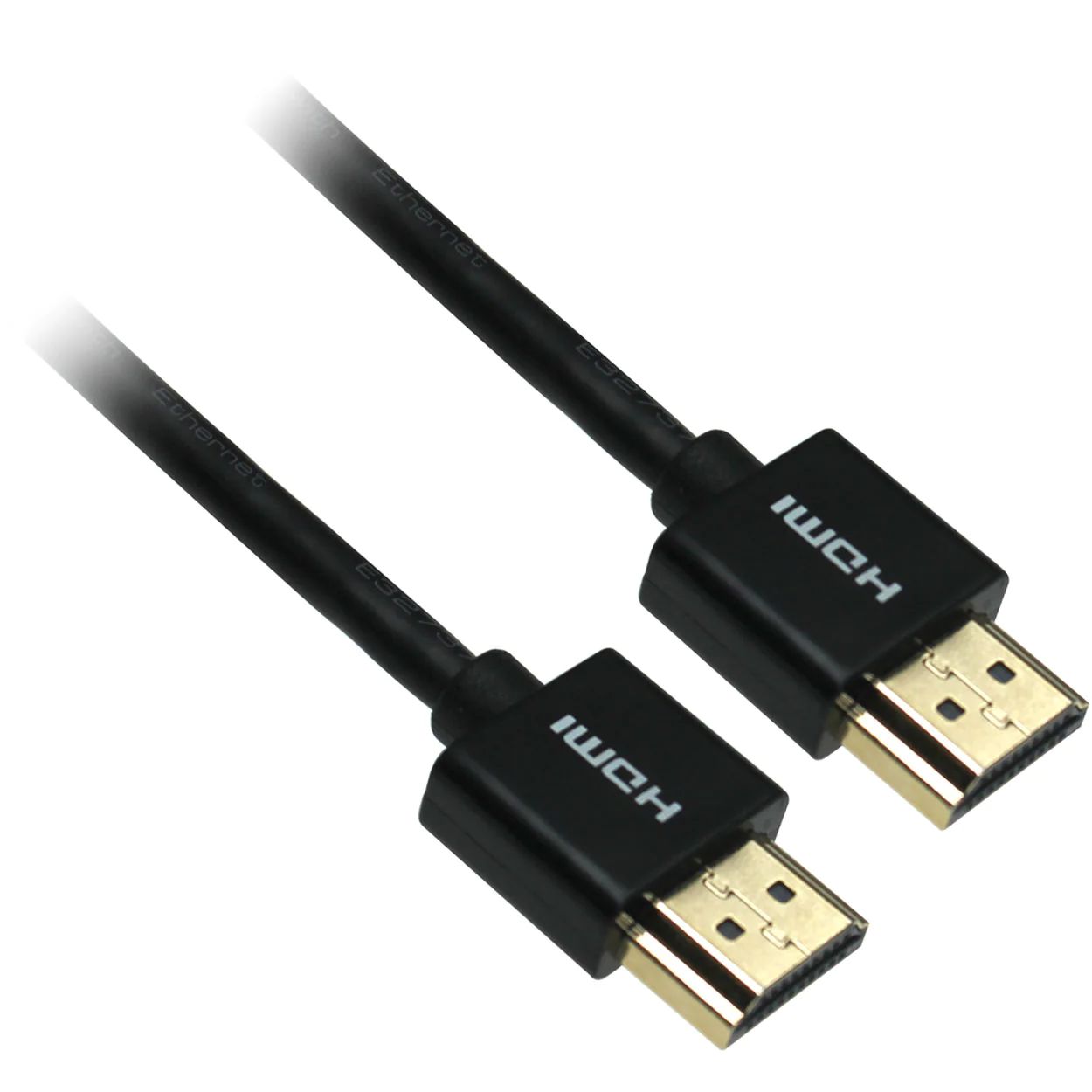Introduction
Have you ever experienced the frustration of your laptop screen going black when you plug in an HDMI cable? It can be quite perplexing, especially when you’re trying to connect your laptop to an external display or TV. This issue can occur for several reasons, ranging from simple settings adjustments to more complex hardware problems. Understanding the potential causes will help you troubleshoot and resolve the issue efficiently.
But before we delve into the reasons behind this black screen issue, let’s take a moment to understand what HDMI actually is. HDMI, short for High-Definition Multimedia Interface, is a standard connection interface used to transmit high-quality audio and video signals between devices. Most modern laptops come equipped with an HDMI port that allows you to connect your laptop to external displays, such as monitors or TVs.
Now, let’s explore some of the possible reasons for your laptop screen going black when you plug in an HDMI cable. It’s important to note that the solutions provided in this article are general guidelines, and your specific laptop model or operating system may have unique settings or issues that require additional troubleshooting.
One common reason for the black screen issue is insufficient power supply. When you connect your laptop to an external display via HDMI, it requires additional power to drive the graphics output. If your laptop’s battery is low or if you’re using a low-capacity power adapter, your laptop may not have enough power to support both the internal screen and the external display simultaneously, resulting in a black screen on the laptop.
Another potential reason could be related to display settings. Sometimes, when you connect your laptop to an external display, the display settings on your laptop might automatically switch to “Second Screen Only” mode, causing the laptop screen to go black. In such cases, adjusting the display settings to “Extend” or “Duplicate” mode can resolve the issue.
Driver issues can also lead to a black screen problem. Outdated or incompatible graphics drivers can disrupt the proper functioning of the HDMI connection, causing display issues. Updating your graphics drivers to the latest version or reinstalling them can help resolve this problem.
A faulty HDMI cable could also be the culprit. If the cable is damaged or improperly connected, it can result in a poor signal transmission, causing the laptop screen to go black. Checking the cable for any visible damage and ensuring a secure connection can help eliminate this possibility.
Understanding HDMI
Before we delve into the reasons behind the black screen issue when you plug in an HDMI cable, let’s take a moment to understand HDMI (High-Definition Multimedia Interface) and its significance. HDMI is a standard interface used to transmit high-quality audio and video signals between devices. It allows for the seamless connection and transmission of digital content, ensuring a high-definition viewing experience.
HDMI has become the preferred choice for connecting devices such as laptops, gaming consoles, Blu-ray players, and TVs, due to its versatility and ability to transmit both audio and video signals. It supports various resolutions, ranging from standard definition (SD) to high definition (HD) and beyond, making it suitable for a wide range of entertainment and multimedia purposes.
With its widespread adoption in consumer electronics, most modern laptops come equipped with an HDMI port, allowing users to connect their laptops to external displays, such as monitors or TVs. This feature enables users to extend their laptop screens, mirror their displays, or enjoy content on a larger screen, enhancing their overall viewing experience.
HDMI technology offers several advantages over its predecessors, such as analog VGA and DVI connections. First and foremost, HDMI provides a digital connection, ensuring a clear and vibrant image without any loss in quality. It eliminates the need for additional audio cables by transmitting both audio and video signals through a single cable, simplifying the connection process.
Furthermore, HDMI supports advanced features like HDCP (High-bandwidth Digital Content Protection), which prevents unauthorized copying of copyrighted content. This ensures secure transmission and protects intellectual property rights, making HDMI a widely adopted standard for content distribution.
It’s important to note that HDMI has evolved over the years to keep up with the advancements in technology. The latest HDMI versions, such as HDMI 2.0 and HDMI 2.1, offer higher bandwidth capabilities, enabling support for even higher resolutions, refresh rates, and color depths. These advancements enhance the overall audiovisual experience and cater to the demands of modern content consumption.
Understanding HDMI and its capabilities is crucial for troubleshooting any issues that may arise when connecting your laptop to external displays. By familiarizing yourself with the features and functionalities of HDMI, you can effectively diagnose and resolve common problems, ensuring a seamless and enjoyable multimedia experience.
Possible Reasons for Laptop Screen Going Black
Encountering a black screen when you plug in an HDMI cable can be frustrating. There are several possible reasons behind this issue, ranging from simple settings adjustments to more complex hardware problems. By understanding these potential causes, you can effectively troubleshoot the problem and find a solution. Let’s explore some of the common reasons for a laptop screen going black when connected to an external display.
One of the main reasons for a black screen is insufficient power supply. When you connect your laptop to an external display via HDMI, it requires additional power to drive the graphics output. If your laptop’s battery is low or if you’re using a power adapter with a low capacity, there may not be enough power to support both the internal screen and the external display simultaneously. This can result in the laptop screen going black. To resolve this issue, make sure your laptop is adequately charged and consider using a higher-capacity power adapter for a stable power supply.
Display settings can also cause the laptop screen to go black. Sometimes, when you connect your laptop to an external display, the display settings on your laptop might automatically switch to “Second Screen Only” mode. In this mode, the laptop screen will turn off, and all display output will be directed to the external display. To fix this, you can adjust the display settings to “Extend” or “Duplicate” mode, which will enable both the laptop screen and the external display to show content.
Driver issues can also lead to a black screen problem. Outdated or incompatible graphics drivers can disrupt the proper functioning of the HDMI connection, causing display issues. In such cases, updating your graphics drivers to the latest version or reinstalling them can help resolve the problem. It’s recommended to visit your laptop manufacturer’s website or the graphics card manufacturer’s website to download the appropriate drivers for your laptop model and operating system.
Furthermore, a faulty HDMI cable can be the culprit. If the cable is damaged or improperly connected, it can result in a poor signal transmission, causing the laptop screen to go black. Inspect the HDMI cable for any visible damage, such as frayed wires or bent pins. Ensure that the cable is securely plugged into both the laptop and the external display. If necessary, try using a different HDMI cable to rule out any cable-related issues.
Compatibility issues between the laptop and the external display can also cause a black screen. Different devices may have varying HDMI standards or different display resolutions and refresh rates. These discrepancies can lead to compatibility problems and result in a black screen. To mitigate this issue, make sure both your laptop and the external display support the same HDMI version and adjust the display settings accordingly to match the capabilities of the connected display.
Lastly, the laptop itself may have hardware problems that can cause the screen to go black when connected via HDMI. This could be due to a faulty graphics card, loose connections within the laptop, or other underlying hardware issues. In such cases, it’s recommended to consult a professional technician to diagnose and repair the laptop.
By identifying and troubleshooting these potential reasons, you can effectively resolve the issue of a black screen when connecting your laptop to an external display via HDMI. Remember to approach each troubleshooting step systematically and consult your laptop’s user manual or seek professional assistance if needed.
Insufficient Power Supply
One of the common reasons for a laptop screen going black when you plug in an HDMI cable is an insufficient power supply. When you connect your laptop to an external display, such as a monitor or TV, via HDMI, it requires additional power to drive the graphics output. If your laptop’s battery is low or if you’re using a power adapter with a low capacity, there may not be enough power to support both the internal screen and the external display simultaneously, resulting in a black screen on the laptop.
To resolve this issue, first, ensure that your laptop is adequately charged. Plug in your laptop to a power source and allow it to charge for a while. Once the battery is sufficiently charged, try connecting the HDMI cable again and see if the black screen issue persists. It’s important to note that some laptops may prioritize power supply to the internal screen over the external display when the battery is low, which can cause the black screen problem.
If the black screen issue persists even with a charged battery, another solution is to use a power adapter with a higher capacity. Laptop power adapters come in various wattages, and some laptops require higher wattage to effectively power both the internal screen and the external display simultaneously. Check the power adapter specifications that came with your laptop or consult the manufacturer’s website to determine the ideal wattage for your laptop model. Investing in a power adapter with a higher wattage rating can provide the necessary power supply and resolve the black screen issue.
In addition to the power adapter, it’s essential to consider the power consumption of your laptop when connected to an external display. Some laptops have power-saving settings that automatically dim the screen or reduce GPU performance to conserve battery life. However, these power-saving settings can also limit the power supply to the external display, resulting in a black screen. To address this, adjust the power settings on your laptop to ensure maximum performance while connected to an HDMI display. You can typically access the power settings through the Control Panel or the Settings menu, depending on your operating system.
If you’re using a docking station or a USB-C hub that provides power delivery, ensure that it can adequately support both the laptop and the external display. Some docking stations or USB-C hubs may have power limits or restrictions, and exceeding those limits can cause power supply issues, resulting in a black screen. Check the specifications of the docking station or USB-C hub to ensure its compatibility and capacity to handle the power requirements of your laptop and the external display.
By addressing the issue of insufficient power supply, you can resolve the black screen problem when connecting your laptop to an external display via HDMI. However, if the issue persists even after ensuring sufficient power supply, it’s recommended to explore other potential causes, such as display settings, driver issues, or hardware problems, to identify and resolve the underlying issue.
Display Settings
Incorrect display settings can often be the reason behind a black screen when you plug in an HDMI cable to connect your laptop to an external display. Sometimes, when you connect your laptop to an external display, the display settings on your laptop might automatically switch to “Second Screen Only” mode. In this mode, the laptop screen will turn off, and all display output will be directed to the external display, resulting in a black screen on the laptop.
To fix this issue, you need to adjust the display settings on your laptop. The specific steps may vary depending on your operating system, but here’s a general guideline to follow:
- First, make sure your laptop is connected to the external display via the HDMI cable.
- Next, right-click on the desktop and select “Display settings” or “Screen resolution.”
- In the display settings window, you should see a section that shows your laptop and the external display. The external display may be labeled as “Display 2” or “HDMI Display.”
- Make sure the external display is detected, and its resolution and orientation are correctly displayed. If not, click on the “Detect” button to allow your laptop to detect the external display.
- Under the “Multiple displays” section, select “Extend these displays” or “Duplicate these displays,” depending on your preference. This will ensure that the display output is mirrored or extended to both the laptop screen and the external display.
- If “Second Screen Only” is selected, change it to either “Extend these displays” or “Duplicate these displays.”
- Click “Apply” to save the changes and test if the black screen issue is resolved. If not, you may need to restart your laptop for the changes to take effect.
If the above steps don’t resolve the black screen problem, you can try adjusting the resolution of the external display. Sometimes, incompatible resolution settings between the laptop and the external display can cause display issues. Go back to the display settings window and try lowering the resolution of the external display to see if that resolves the issue. If needed, you can also try different display orientation settings, such as landscape or portrait mode, to troubleshoot the black screen problem.
Additionally, some laptops have dedicated function keys that allow you to toggle between different display modes. These function keys are usually labeled with icons representing different displays, such as a laptop screen, a monitor, or a TV. Pressing the appropriate function key, often in combination with the “Fn” key, can switch between display modes and help resolve the black screen issue.
By adjusting the display settings on your laptop, you can ensure that both the laptop screen and the external display are correctly configured, eliminating the black screen problem. Remember to refer to your laptop’s user manual or the help documentation provided by the operating system for specific instructions related to display settings on your particular device.
Driver Issues
Driver issues can be a common cause of a black screen when you connect your laptop to an external display using an HDMI cable. Outdated or incompatible graphics drivers can disrupt the proper functioning of the HDMI connection, resulting in display issues, including a black screen. Resolving driver issues is essential to ensure a seamless and error-free connection between your laptop and the external display.
To address driver-related problems, it is recommended to update your graphics drivers to the latest version. Here’s a step-by-step guide to help you update your graphics drivers:
- Identify your graphics card or GPU (Graphics Processing Unit). You can do this by accessing the Device Manager on your laptop. In Windows, you can open the Device Manager by right-clicking on the Start button and selecting “Device Manager” from the menu. Expand the “Display adapters” category to find the name of your graphics card.
- Visit the website of your laptop manufacturer or the graphics card manufacturer to download the latest drivers for your specific model and operating system. Be sure to download the correct drivers that match your hardware configuration.
- Download and run the driver installer as per the manufacturer’s instructions. Follow the on-screen prompts to complete the installation. It is recommended to select the option for a “clean” or “custom” installation, which ensures the previous driver files are properly removed before installing the new ones.
- Once the installation is complete, restart your laptop to allow the changes to take effect.
- After restarting, check if the black screen issue is resolved when connecting your laptop to the external display via HDMI.
If updating the graphics drivers does not solve the problem, you can try reinstalling the drivers. Reinstalling the drivers can help resolve any issues caused by corrupted driver files or incomplete installations. Follow these steps to reinstall the graphics drivers:
- Go to the Device Manager again and locate your graphics card under “Display adapters.”
- Right-click on the graphics card name and select “Uninstall device.” Confirm the uninstallation when prompted.
- Once the driver is uninstalled, restart your laptop.
- After restarting, your laptop may automatically install a generic graphics driver. However, it is recommended to download the latest drivers from the manufacturer’s website and follow the installation steps mentioned earlier to ensure you have the most up-to-date and compatible drivers.
Updating or reinstalling the graphics drivers can often resolve driver-related issues, including a black screen when connecting your laptop to an external display via HDMI. However, if the problem persists, you may need to explore other potential causes, such as faulty HDMI cables, compatibility issues, or hardware problems, to identify the root cause and find a suitable solution.
Faulty HDMI Cable
A faulty HDMI cable can be a common culprit when experiencing a black screen issue while connecting your laptop to an external display. If the HDMI cable is damaged, improperly connected, or of low quality, it can result in a poor signal transmission, leading to display problems, including a black screen.
The first step in troubleshooting a faulty HDMI cable is to inspect it for any visible damage. Check both ends of the cable for frayed wires, bent pins, or other physical issues. If you notice any damage, it’s advisable to replace the cable with a new one. Sometimes, even minor damage can significantly affect the quality of the signal transmission.
Ensure that the HDMI cable is securely plugged into both the HDMI port on your laptop and the HDMI port on the external display. Sometimes, a loose connection can lead to intermittent signal loss or a complete black screen. Disconnect the cable, wait for a few seconds, and then reconnect it firmly to ensure a secure connection. It’s also a good idea to try connecting the HDMI cable to a different HDMI port on both your laptop and the external display, if available, to rule out the possibility of a faulty port.
The quality of the HDMI cable can also impact its performance. Lower quality cables may not provide optimal signal transfer, resulting in display issues. If you’re using a cheap or generic HDMI cable, consider upgrading to a higher quality cable. Look for HDMI cables with gold-plated connectors and shielded wires to ensure better signal integrity and reduce the chances of interference from other devices.
In addition to the physical aspects of the cable, you should also check the length of the HDMI cable. HDMI cables have a maximum length limit for reliable signal transmission. If your HDMI cable is excessively long, it may not provide a stable connection, leading to a black screen or other display problems. In such cases, try using a shorter HDMI cable or consider using an HDMI extender or repeater to maintain signal integrity over longer distances.
If you have access to another HDMI cable, preferably one known to be in working condition, try using it to connect your laptop to the external display. This can help determine if the issue is indeed with the HDMI cable itself. If the black screen problem persists even with a known working HDMI cable, then the cause of the issue may lie elsewhere, such as display settings, driver issues, or hardware problems.
By inspecting the HDMI cable for damage, ensuring a secure connection, and using a high-quality cable, you can eliminate the possibility of a faulty HDMI cable causing the black screen issue. However, if the problem persists, it is essential to explore other potential causes and solutions to identify the underlying problem.
Compatibility Issues
Compatibility issues between your laptop and the external display can sometimes result in a black screen when connecting via HDMI. These issues may arise due to differences in HDMI standards, display resolutions, or refresh rates supported by your laptop and the external display. Resolving compatibility problems is crucial for ensuring a successful connection and a proper display output.
Begin by verifying that both your laptop and the external display support the same HDMI version. HDMI standards have evolved over time, with each version offering different capabilities. For example, older laptops may support HDMI 1.4, while newer ones may have HDMI 2.0 or HDMI 2.1 ports. Similarly, the external display may also have varying HDMI capabilities. Using an HDMI cable with a higher version than what both devices support may result in compatibility issues. Ensure that both your laptop and the external display are compatible with the same HDMI version for seamless connectivity.
Another aspect to consider is the supported display resolutions and refresh rates. Your laptop and the external display should ideally support compatible resolutions and refresh rates to establish a successful HDMI connection. If the display settings on your laptop are set to a resolution or refresh rate that is not supported by the external display, it can result in a black screen. To resolve this, ensure that your laptop’s display settings are configured to match the native resolution and refresh rate supported by the external display. Consult the user manuals or manufacturer’s specifications for both devices to determine the supported resolutions and refresh rates.
In some cases, the external display may have limitations on its HDMI ports, such as only supporting a specific HDMI standard or resolution. Ensure that you’re connecting the external display using the correct HDMI input port that supports the desired resolution and refresh rate. Some displays may have multiple HDMI ports, and using the wrong one can lead to compatibility issues.
Software compatibility can also impact the HDMI connection. Ensure that your laptop’s operating system is up to date and that any required drivers or firmware updates for the external display are installed. Keeping your system and devices updated can help resolve compatibility issues and ensure the smooth functioning of the HDMI connection.
If all else fails, try troubleshooting the compatibility issues using an HDMI signal converter. These converters can help bridge the gap between different HDMI standards, resolutions, or refresh rates. For example, if your laptop has an HDMI 2.0 port and the external display only supports HDMI 1.4, using an HDMI signal converter can help establish compatibility between the two devices.
By addressing compatibility issues between your laptop and the external display, you can overcome the black screen problem when connecting via HDMI. It’s important to ensure that both devices support the same HDMI version, that the resolutions and refresh rates are compatible, and that any necessary software updates or HDMI signal converters are used to establish a successful HDMI connection.
External Display Configuration
When encountering a black screen issue while connecting your laptop to an external display via HDMI, examining the external display configuration is vital. Incorrect settings or configurations on the external display itself can sometimes lead to display problems. By properly configuring the external display, you can ensure a successful HDMI connection and resolve issues like the black screen problem.
First, verify that the external display is powered on and properly connected to your laptop via the HDMI cable. Sometimes, the external display may go into a power-saving mode or fail to detect the HDMI signal if it’s not turned on or connected correctly. Double-check the power cable and HDMI connection to ensure they are secure and functioning properly.
Access the settings menu of the external display, usually by using the buttons or remote control provided. Look for options related to the input source or input selection. Ensure that the correct HDMI input source is selected. In some cases, the external display may have multiple HDMI inputs, so make sure you choose the one connected to your laptop. Selecting the wrong input source can cause a black screen or no signal error.
Next, check the display settings on the external display. Using the buttons or menus on the display, navigate to the display settings and verify that the resolution and refresh rate are correctly configured. Ensure that the external display is set to the native resolution recommended by the manufacturer. Mismatched resolutions between the laptop and the external display can result in display issues.
Additionally, some external displays have their own display mode settings, such as “PC mode” or “Game mode.” These modes can sometimes enhance the display quality or optimize it for specific applications. Experiment with different display modes on the external display to see if it helps resolve the black screen issue. Keep in mind that not all external displays have this feature, but if it’s available, it’s worth exploring.
If the external display has advanced image processing features, such as dynamic contrast or color enhancements, consider turning them off. These features can sometimes interfere with the HDMI signal and cause display problems. Disabling or adjusting these settings can help ensure a stable and accurate display output.
Finally, if the external display has any firmware or software updates available, install them. Manufacturers often release updates to address compatibility issues, improve performance, or fix bugs. Check the manufacturer’s website or consult the user manual for instructions on how to update the firmware or software of your specific external display model.
By properly configuring the external display, selecting the correct HDMI input source, ensuring the appropriate resolution, and updating its firmware or software if necessary, you can eliminate potential issues and resolve the black screen problem. Keep in mind that the procedures for adjusting settings may vary depending on the make and model of the external display, so refer to the manufacturer’s instructions for specific steps.
Laptop Hardware Problems
If you have exhausted all software-related troubleshooting steps and are still experiencing a black screen when connecting your laptop to an external display via HDMI, it is possible that the issue lies within the hardware components of your laptop. Several hardware-related problems can cause display issues, and identifying and addressing these problems can help resolve the black screen issue.
One potential hardware problem is a faulty graphics card. The graphics card, also known as the GPU (Graphics Processing Unit), is responsible for rendering images and videos on your laptop screen and external displays. If the graphics card is malfunctioning or damaged, it can result in display problems, including a black screen. In this case, you may need to consult a professional technician or contact the laptop manufacturer’s support for further assistance and possible repair or replacement of the graphics card.
Loose or disconnected internal connections within the laptop can also cause a black screen when using HDMI. Over time, vibrations or movements may cause the internal connections responsible for transmitting video signals to become loose or partially disconnected. If you feel comfortable doing so, you can try opening up your laptop and checking for any loose connections. However, it’s essential to exercise caution and follow the manufacturer’s instructions or seek professional assistance to avoid causing further damage to your laptop.
Faulty display components, such as the laptop’s screen or the HDMI port itself, can also lead to a black screen issue. If the laptop screen is not receiving or transmitting the HDMI signal correctly, it may result in a black screen. Similarly, if the HDMI port on your laptop is damaged or not functioning properly, it can lead to connection problems and display issues. In such cases, professional repair or component replacement may be necessary to resolve the problem.
In some instances, incompatible hardware configurations can also cause display issues. This may include conflicts between the graphics card and other components or peripherals connected to your laptop. Try disconnecting any external devices or peripherals, such as USB devices or docking stations, and then connect your laptop to the external display via HDMI. If the black screen issue is resolved, it may indicate a compatibility problem with one of the disconnected devices. In this case, reconnect the devices one by one to identify the culprit and seek appropriate solutions, such as driver updates or hardware replacements.
It’s important to note that diagnosing and resolving hardware-related problems can be complex and may require technical expertise. Attempting to fix hardware issues without adequate knowledge or experience can lead to further damage to your laptop. If you’re unsure or uncomfortable with troubleshooting hardware problems on your own, it’s best to consult a professional technician or contact the laptop manufacturer’s support for assistance.
By addressing hardware problems such as faulty graphics cards, loose connections, and malfunctioning display components, you can potentially resolve the black screen issue when connecting your laptop to an external display via HDMI. Seeking professional assistance or guidance is advised to ensure the proper diagnosis and resolution of hardware-related problems.
Conclusion
Encountering a black screen when you plug in an HDMI cable to connect your laptop to an external display can be frustrating, but with a systematic approach to troubleshooting, you can often find a solution. Throughout this article, we have explored various potential causes for the black screen issue and discussed possible solutions.
Insufficient power supply can be a common culprit, especially when the laptop’s battery is low or the power adapter has a low capacity. Ensuring sufficient power and using a higher-capacity power adapter can help resolve this issue. Display settings, such as “Second Screen Only” mode, can cause the laptop screen to go black. Adjusting the display settings to “Extend” or “Duplicate” mode can rectify this problem.
Driver issues, such as outdated or incompatible graphics drivers, can also disrupt the HDMI connection and lead to display problems. Updating or reinstalling the graphics drivers can often help resolve this issue. A faulty HDMI cable can lead to a poor signal transmission, resulting in a black screen. Checking for physical damage, ensuring a secure connection, and using a high-quality cable are important steps in troubleshooting cable-related issues.
Compatibility issues between the laptop and the external display can also cause the black screen problem. Verifying HDMI versions, supported resolutions, and refresh rates, as well as updating firmware or using HDMI signal converters, can help address compatibility problems. Additionally, configuring the external display correctly and ensuring the necessary firmware or software updates further contribute to resolving the black screen issue.
In some cases, hardware problems within the laptop, such as a faulty graphics card or loose connections, can lead to a black screen. Professional assistance or consultation with the laptop manufacturer’s support may be necessary to diagnose and repair hardware-related issues.
It’s essential to approach troubleshooting systematically, ruling out each potential cause and considering all relevant troubleshooting steps. Every laptop and external display setup may have unique configurations and requirements, so adapt the solutions provided in this article to suit your specific circumstances.
By taking the time to understand and address the potential reasons behind the black screen issue when connecting your laptop to an external display via HDMI, you can overcome this frustrating problem and enjoy a seamless multimedia experience with your devices.







